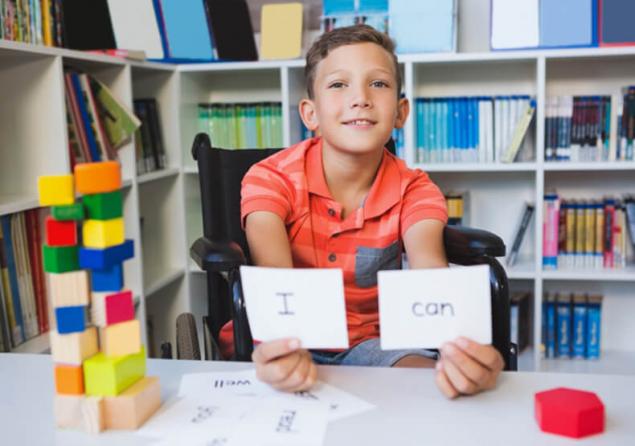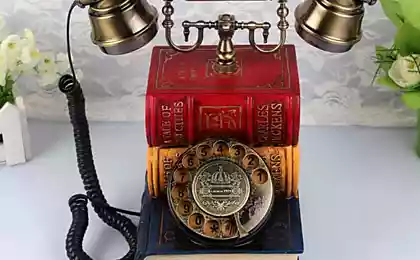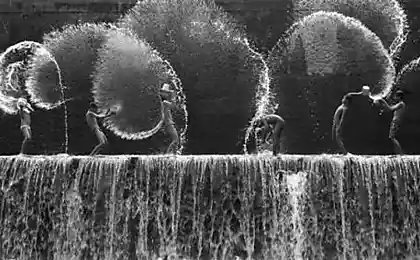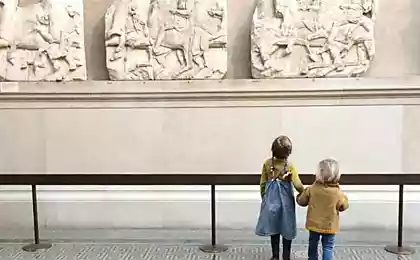546
4 mnemonics that will help children cope with homework
Lecturer in mathematics, member of the project "Teacher Russia" Alexander Yadrin suggested simple mnemotechnique that will help to quickly deal with homework.
Mnemonics — a set of techniques that a person uses to something easy to remember or learn.

Any mnemonic is based on 5 simple rules (you must follow at least one, but preferably several):
1. What you need to remember is to be associated with us. We say, "I'm doing something...".
2. The image that you have, must be illogical.
3. The Association should be funny.
4. The more absurd or abstract the image will be — the better.
5. When you commit, try to associate the subject with the first Association that comes to mind.
Method of Cicero or the Roman room system
The method is named after the Roman orator, who could easily, without peeking at a piece of paper to tell a five-hour lecture. He works to memorize large amounts of information, it does not require special preparation students.
The idea is to mentally link the unit of memorized information to the objects in the room.
Better to do it in familiar surroundings, then it is just to restore the picture in my head and, accordingly, to recall the necessary facts. So did Cicero, when preparing for their presentations. He linked the key points of the lectures with the objects in your house, and then presenting them in a clear sequence and thus kept in mind the hours of "skeleton" of the lecture.
You have got to work on this method, you have to sit in a room, look around and choose in which direction you will move (clockwise or counterclockwise). Then mentally mark items (door, bed, wardrobe, battery, table and others) to think about how they can be linked with the information you need to memorize.
For example, you need to learn all the seas that wash Russia. Find a map of Russia, write out names and one by one start to tie them to the objects in the room. Reason: "Black door, let it be the black sea wooden picture frame reminiscent of shoes, then will be the Laptev sea, a touch of tulle at the open window associate with the White sea". Each will have its associations and images. Experiment, use of mnemonics and the result will not keep itself waiting.
To memorize something using this method, it is enough to restore the picture in my head 2-3 times, and then in a moment you can easily list the necessary facts.

Method Atkinson
Richard Atkinson is a Professor of psychology at Stanford University, known for his work in the study of human memory.
University Atkinson taught Russian language. Once he decided to conduct an experiment on memorizing Russian words: gave one group of students to memorize Russian words, and the second asked you to remember the words with the chords. Excellent results showed the second group.
The Atkinson method is good for learning foreign languages. For example, you need to remember the word "oak" (read "oak" — English, "oak"). Find Russian phonetic Association. This can be the words "eye" or "window". Next, tie this Association with the object that represents the word: the window is made of oak. When you need to recall how the English dub you can easily do so, restoring the chain of associations.
Method icons, and animations
The method of pictograms was developed by the psychologist, the founder of Russian neuropsychology, Alexander Luria.
The method of icons is perfect to teach poetry. Works especially well with the visuals. By the way, almost 80% of children visual channel is a key method of perception.
The project "Arzamas" there are apps for smartphones that show this method in action. In poems by Pushkin, Mandelstam, Yesenin need to substitute Emoji (symbols like smiley faces) instead of words.
Do not have to use the app, but you can ask the children to rewrite the poem in each line to encode one of the words with the icon (i.e. to draw that word). Finally the children learn poems, working through them with action. Gesticulating, as if living every row (it important to speak it aloud) the child makes the images more clear for yourself.

Method cards
A system of flash cards for memorization developed by German science popularizer Sebastian Leitner. Usually it is used for learning a foreign language, but I decided to apply the system to the geometry.
I read textbooks on plane geometry with 7 to 9 class and write key points. Then write them on the cards. On the one hand — a thesis on the opposite side is briefly the essence. For example, on one side is written "the characteristics of parallel lines" on the reverse — these are signs (one-sided angles equal 180, crosswise lying angles are equal and corresponding angles are equal).
How it works: all cards are in one stack. The student begins to sort out them, read the abstracts. If he remembers the rule, lays the card in one pile, those abstracts that cause difficulties in another. Then the student works thoroughly on the second stack of cards, and starts to work with them. It is important to shuffle the cards and make several approaches a day.
What are the consequences of corporal punishment of a childThese words— the worst curse a parent
According to research by the German psychologist H. Ebbinghaus, for long memory to recall the material immediately after learning, then a second time – after 20 minutes, the third after 8 hours, the fourth in 24 hours, and the last before the lesson. My students using this method will soon become bullet proof in geometry, and therefore will be more confident in the subject.published
Author: Olga Gavrilova
Source: letidor.ru/article/4-mnemotekhniki_-kotorye-pomog_202495/
Mnemonics — a set of techniques that a person uses to something easy to remember or learn.

Any mnemonic is based on 5 simple rules (you must follow at least one, but preferably several):
1. What you need to remember is to be associated with us. We say, "I'm doing something...".
2. The image that you have, must be illogical.
3. The Association should be funny.
4. The more absurd or abstract the image will be — the better.
5. When you commit, try to associate the subject with the first Association that comes to mind.
Method of Cicero or the Roman room system
The method is named after the Roman orator, who could easily, without peeking at a piece of paper to tell a five-hour lecture. He works to memorize large amounts of information, it does not require special preparation students.
The idea is to mentally link the unit of memorized information to the objects in the room.
Better to do it in familiar surroundings, then it is just to restore the picture in my head and, accordingly, to recall the necessary facts. So did Cicero, when preparing for their presentations. He linked the key points of the lectures with the objects in your house, and then presenting them in a clear sequence and thus kept in mind the hours of "skeleton" of the lecture.
You have got to work on this method, you have to sit in a room, look around and choose in which direction you will move (clockwise or counterclockwise). Then mentally mark items (door, bed, wardrobe, battery, table and others) to think about how they can be linked with the information you need to memorize.
For example, you need to learn all the seas that wash Russia. Find a map of Russia, write out names and one by one start to tie them to the objects in the room. Reason: "Black door, let it be the black sea wooden picture frame reminiscent of shoes, then will be the Laptev sea, a touch of tulle at the open window associate with the White sea". Each will have its associations and images. Experiment, use of mnemonics and the result will not keep itself waiting.
To memorize something using this method, it is enough to restore the picture in my head 2-3 times, and then in a moment you can easily list the necessary facts.

Method Atkinson
Richard Atkinson is a Professor of psychology at Stanford University, known for his work in the study of human memory.
University Atkinson taught Russian language. Once he decided to conduct an experiment on memorizing Russian words: gave one group of students to memorize Russian words, and the second asked you to remember the words with the chords. Excellent results showed the second group.
The Atkinson method is good for learning foreign languages. For example, you need to remember the word "oak" (read "oak" — English, "oak"). Find Russian phonetic Association. This can be the words "eye" or "window". Next, tie this Association with the object that represents the word: the window is made of oak. When you need to recall how the English dub you can easily do so, restoring the chain of associations.
Method icons, and animations
The method of pictograms was developed by the psychologist, the founder of Russian neuropsychology, Alexander Luria.
The method of icons is perfect to teach poetry. Works especially well with the visuals. By the way, almost 80% of children visual channel is a key method of perception.
The project "Arzamas" there are apps for smartphones that show this method in action. In poems by Pushkin, Mandelstam, Yesenin need to substitute Emoji (symbols like smiley faces) instead of words.
Do not have to use the app, but you can ask the children to rewrite the poem in each line to encode one of the words with the icon (i.e. to draw that word). Finally the children learn poems, working through them with action. Gesticulating, as if living every row (it important to speak it aloud) the child makes the images more clear for yourself.

Method cards
A system of flash cards for memorization developed by German science popularizer Sebastian Leitner. Usually it is used for learning a foreign language, but I decided to apply the system to the geometry.
I read textbooks on plane geometry with 7 to 9 class and write key points. Then write them on the cards. On the one hand — a thesis on the opposite side is briefly the essence. For example, on one side is written "the characteristics of parallel lines" on the reverse — these are signs (one-sided angles equal 180, crosswise lying angles are equal and corresponding angles are equal).
How it works: all cards are in one stack. The student begins to sort out them, read the abstracts. If he remembers the rule, lays the card in one pile, those abstracts that cause difficulties in another. Then the student works thoroughly on the second stack of cards, and starts to work with them. It is important to shuffle the cards and make several approaches a day.
What are the consequences of corporal punishment of a childThese words— the worst curse a parent
According to research by the German psychologist H. Ebbinghaus, for long memory to recall the material immediately after learning, then a second time – after 20 minutes, the third after 8 hours, the fourth in 24 hours, and the last before the lesson. My students using this method will soon become bullet proof in geometry, and therefore will be more confident in the subject.published
Author: Olga Gavrilova
Source: letidor.ru/article/4-mnemotekhniki_-kotorye-pomog_202495/























